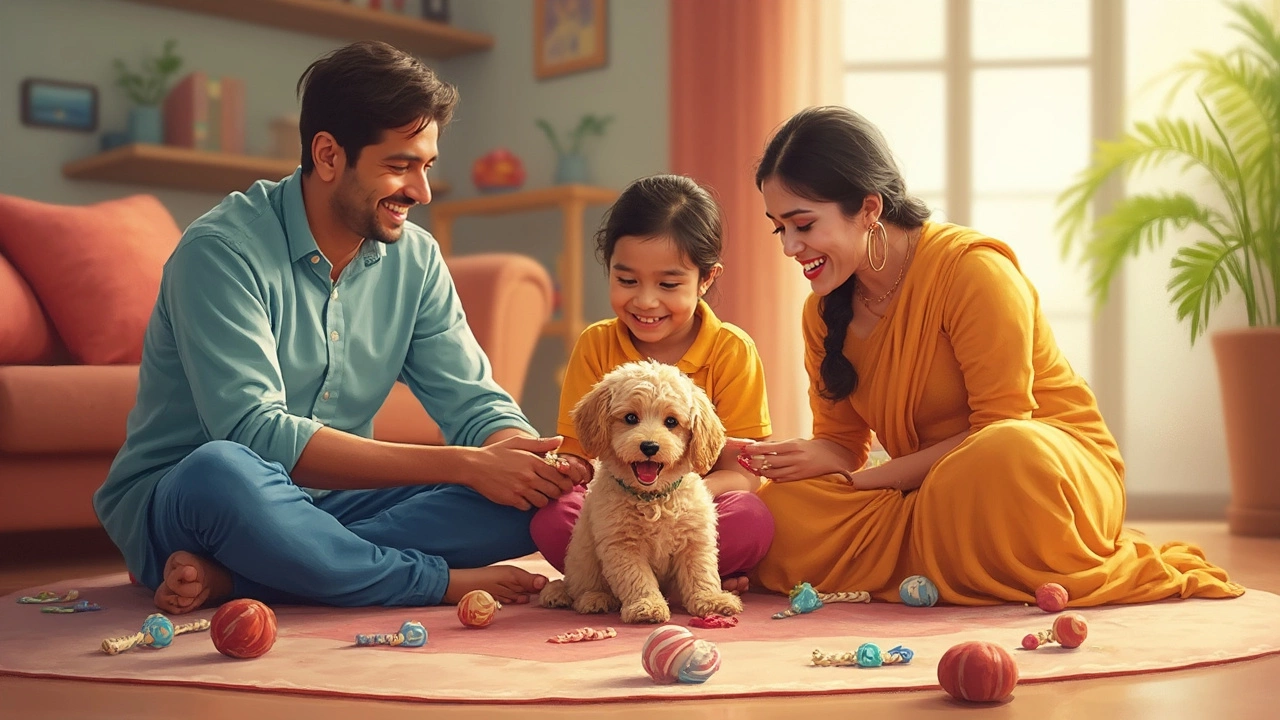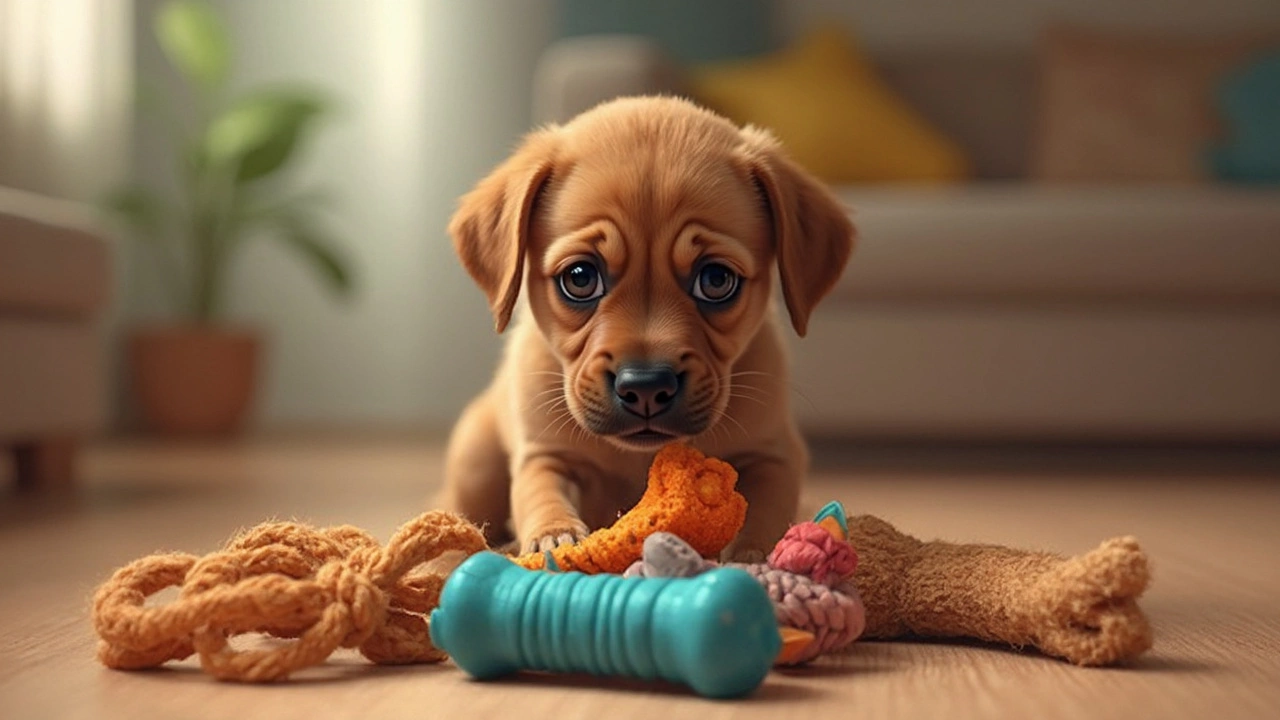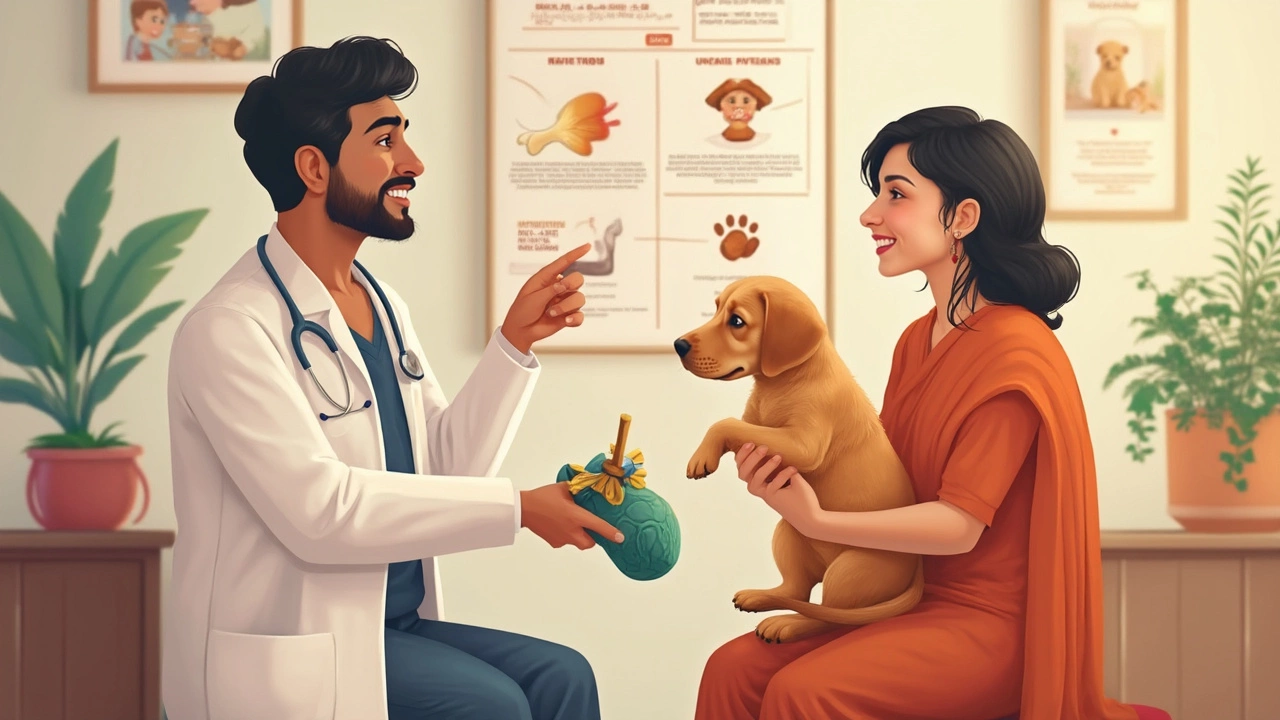
Watching a puppy try to chew everything in sight can make you wonder if you live in a toy store, or a war zone for furniture. I know the feeling—my sock count dropped the month we brought Wren home. Chewing isn’t just a puppy quirk, though. It’s their way of easing teething pain, exploring the world, and staying sane when alone.
The tough part? Puppy teeth are like tiny razors, and not everything they chomp down on is safe. Some toys splinter or break too easily, while others are too hard and might break their teeth. Before you toss a rubber bone in your cart, it pays to know what makes a chew toy “puppy safe.” The right toy keeps their mouths healthy, fights boredom, and saves your belongings from unexpected casualties.
- Why Puppies Need to Chew
- Qualities of a Safe Chew Toy
- Best Types of Chew Toys for Puppies
- What to Avoid: Unsafe Options
- Pro Tips for Happy, Safe Chewing
Why Puppies Need to Chew
Puppies chew on things for more reasons than just being a handful. Teething is no joke—just like babies, puppies' gums get sore as their baby teeth fall out and adult teeth come in, usually between 3 and 6 months old. Chewing helps relieve that discomfort. It's also their way of blowing off steam and fighting boredom. Every item they pick up in their mouth is basically a puppy’s way of asking, "Is this something I should know about?"
Here’s what chewing actually helps with:
- puppy chew toys are key during teething—chewing soothes gums and can even help new teeth come in the right way.
- It gives their jaws a workout. Strong jaw muscles are important as a dog grows up, and chewing does the trick better than a ball chase.
- Chewing can calm them down if they’re anxious or adjusting to a new place. This is why rescue puppies or those in busy homes can turn into real chewing machines.
- It prevents boredom. Bored puppies find trouble; a good chew toy keeps their minds busy and off things like your shoes or remote control.
Just how much do puppies like to chew? The average teething puppy will spend around two hours a day gnawing on something. Some seem to double that when left unsupervised. If you ever wondered whether some breeds chew more than others, check the table below:
| Breed | Cruise Control Chewer? | Most Active Chewing Age |
|---|---|---|
| Lab Retriever | Yes | 3-8 months |
| Beagle | Yes | 3-7 months |
| Bulldog | Somewhat | 4-7 months |
| Shih Tzu | Low | 4-8 months |
So yeah, chewing is a big part of puppy life. If you give them something safe to gnaw on, you're protecting your stuff and helping them grow into calmer, happier dogs.
Qualities of a Safe Chew Toy
Ready to grab your puppy a new chew toy? Before you toss something random onto the checkout counter, let’s look at what actually makes a chew toy safe for your pup. It’s not just about how cute it looks or how much it squeaks—there’s real science behind what works for puppy chew toys.
The best puppy chew toys check off a few key boxes:
- Material that’s puppy-safe: Go for non-toxic rubber or durable nylon. Natural rubber, like what you’d see in the classic red KONG, is popular because it’s tough but soft enough for puppy teeth. Soft plush toys might be okay under supervision, but they won’t last long with hardcore chewers.
- Right level of firmness: You want something that bends a little under pressure. If you can’t make a dent with your fingernail, it might be too hard for a puppy’s mouth and could break teeth. This rules out most hard bones and antlers for young pups.
- Correct size and shape: Pick a toy large enough so your puppy can’t swallow or choke on it, but not so huge they can’t actually get their mouth around it. Round or oddly-shaped toys (like those knobby balls or twisted shapes) help keep things interesting and harder to destroy.
- Easy to clean: Puppies are messy. Chew toys that can go in the dishwasher or be scrubbed down with soap and hot water will save you a headache and keep bacteria away.
- No small, breakable parts: Avoid anything with buttons, glued-on eyes, or squeakers that easily pop out. Those are just accidents waiting to happen.
Here’s something a lot of people miss—the average puppy reaches full adult teeth by 6 months old, but their jaws are still developing. Chewing the wrong materials can actually set dental health back or cause expensive injuries.
| Chew Toy Material | Safe for Puppies? | Feels Soft Enough? | Dishwasher Safe? |
|---|---|---|---|
| Natural Rubber | Yes | Yes | Usually |
| Nylon | Yes (puppy versions) | Sometimes | Usually |
| Antlers/Bones | No | No | No |
| Rawhide | No | Yes | No |
| Plush | Only with supervision | Yes | Sometimes |
A helpful hack: Press your fingernail into a toy before buying. If it gives a bit, you’re usually good. And if a toy says it’s for puppies on the package, that’s a solid starting point. Toy makers like Nylabone and KONG have full lines just for puppies, which makes life easier.

Best Types of Chew Toys for Puppies
The world of puppy chew toys is jam-packed with cute shapes and wild colors, but not all of them do a good job at keeping your puppy safe and entertained. Picking the puppy chew toys that actually work comes down to three things: material, size, and design. Let’s dig into what gets the vet’s thumbs up, and what experienced dog parents reach for again and again.
Soft Rubber Chew Toys
These are classics for a reason. Brands like KONG Puppy and Nylabone Puppy get recommended by vets because they're soft enough for little teeth but tough enough that they don’t just vanish in an afternoon. Soft rubber options let your puppy gnaw away without risking tooth cracks. They’re also easy to wash—which, trust me, you’ll want after a long day outside!
Rope Toys
Rope toys do double-duty: they let your pup tug and chew, plus the strands help with dental cleaning. Just make sure the rope is tightly twisted and replace it if it starts to fall apart—swallowed yarn is no good.
Edible Chews Made for Puppies
Puppy-specific dental chews (think Greenies Puppy or Whimzees Puppy) are designed to be a safe snack and a chewy distraction. Look for products labeled “for puppies,” which break down easier and avoid choking risks.
Teething Rings and Freezable Chew Toys
Puppies love cool relief when their gums feel sore. Toys you can freeze, like teething rings or certain rubber sticks, take the edge off teething discomfort and keep chewing interesting.
Plush Toys With Reinforced Seams
While plush toys are usually gentler on baby teeth, pick options with reinforced stitching so they don’t just pop open. Some even hide squeakers or crinkly bits for extra play value.
| Type | Main Benefit | Average Lifespan* | Good For Teething? |
|---|---|---|---|
| Soft Rubber | Durable, cleans teeth | 2-4 months | Yes |
| Rope | Interactive, flosses teeth | 1-2 months | Yes |
| Edible Chews | Safe to ingest, satisfies urge | Single-use | Yes |
| Freezable Toys | Soothes gums | 2-3 months | Absolutely |
| Plush (Reinforced) | Gentle, comforting | 2-4 weeks | Good if supervised |
*Based on average use by a medium-sized puppy. Check regularly for wear and always supervise playtime, especially with soft or edible toys.
What to Avoid: Unsafe Options
Not all chew toys or treats are safe for puppies. Some popular options at the pet store (or in your own house) can end up causing more trouble than they're worth. Tiny pups don’t know the difference, so it’s up to us to keep risky stuff out of their mouth.
The biggest red flag? Anything that can splinter, break into sharp bits, or get swallowed in big chunks. This can lead to choking or even a vet visit for a blockage. Here’s a breakdown of things you should really steer clear of:
- Hard animal bones (cooked or raw): These can break teeth, splinter, and are a choking risk for puppies. I’ve seen a vet bill climb to several hundred bucks for a simple bone splinter mishap.
- Pig ears, cow hooves, and antlers: Tough to digest, and they can crack puppy teeth. Sometimes they splinter, which isn’t something you want your puppy swallowing.
- Rawhide chews: These are sold everywhere, but they swell up in the stomach and can cause blockages. Some even carry nasty chemicals from processing.
- Kids’ toys, socks, string, and shoes: These aren’t made for teeth—bits can break off and cause stomach issues. Socks especially seem to be on every puppy’s hit list, but they can cause serious digestive trouble if swallowed.
- Plastic bottles and hard or cheap plastics: Puppies can bite pieces off, eat them, and end up with intestinal blockages. Hard plastics can also cut gums and mouths.
If you see your puppy going after something in this list, swap it out fast. Here’s how some common unsafe options stack up from a safety stand-point:
| Unsafe Item | Risks |
|---|---|
| Cooked Bones | Splintering, choking, mouth injuries |
| Rawhide | Swelling, blockages, chemical residue |
| Antlers | Tooth fractures, choking |
| Pig Ears | Digestive upset, splinters |
| Plastic Toys | Choking, gastrointestinal blockages |
| Household Items (socks, shoes) | Swallowing, intestinal blockage |
Stick with safe puppy chew toys you know are made for teething pups. If you’re ever unsure about a toy, press your fingernail into it—if it leaves a mark, it’s soft enough for your puppy to chew without risking a broken tooth. When in doubt, check with your vet before handing it over.

Pro Tips for Happy, Safe Chewing
If you want your puppy to chew safely—and not end up at the vet over a swallowed toy chunk—there are some easy habits that make a big difference. Here's what helps most puppy parents, including me, avoid emergency stress and keep those tails wagging.
- Supervise anytime you give a new toy. Even chew toys labeled “indestructible” can fall apart. Keep an eye out the first few times to make sure your puppy isn’t tearing off bits they shouldn’t swallow.
- Pick the right size toy. If a toy can fit entirely in your dog’s mouth or be grabbed and swallowed whole, it’s a choking risk. Follow the size chart on packaging and size up if you’re not sure.
- Rotate toys to keep things interesting. Puppies get bored fast. Swapping chew toys every few days can make an old toy feel like new, and distract from gnawing on your shoes.
- Wash toys regularly. Bacteria loves slobbery, half-chewed toys. Most rubber and nylon toys are dishwasher safe, but always check labels first. A good rule: wash toys weekly or if they smell funky.
- For teething relief, try freezing soft rubber toys. Cold can soothe sore gums, and some toys are made to hold a little water or broth for extra comfort. Don’t freeze hard bones—those can crack puppy teeth.
- Replace toys at the first sign of damage. If you see sharp edges, loose threads, or chunks missing, toss the toy. It’s better to spend a few bucks on a new one than risk an expensive vet trip.
Some chew toys even help clean teeth as your puppy chews, which is a win-win for fresh breath and healthy gums. Take a look at this quick table for a few "best practices" and real stats:
| Tip | Why It Matters | Vet Recommendation Rate |
|---|---|---|
| Supervision | Prevents choking or swallowing hazards | 95% |
| Rotate Toys | Reduces boredom and bad chewing habits | 88% |
| Regular Cleaning | Limits bacteria and extends toy life | 80% |
| Replace Damaged Toys | Prevents injuries from sharp/broken pieces | 92% |
Bottom line: the best way to keep your puppy safe is to stay involved. A little planning with puppy chew toys saves you from destroyed sneakers—and the stress of a toy gone wrong.


